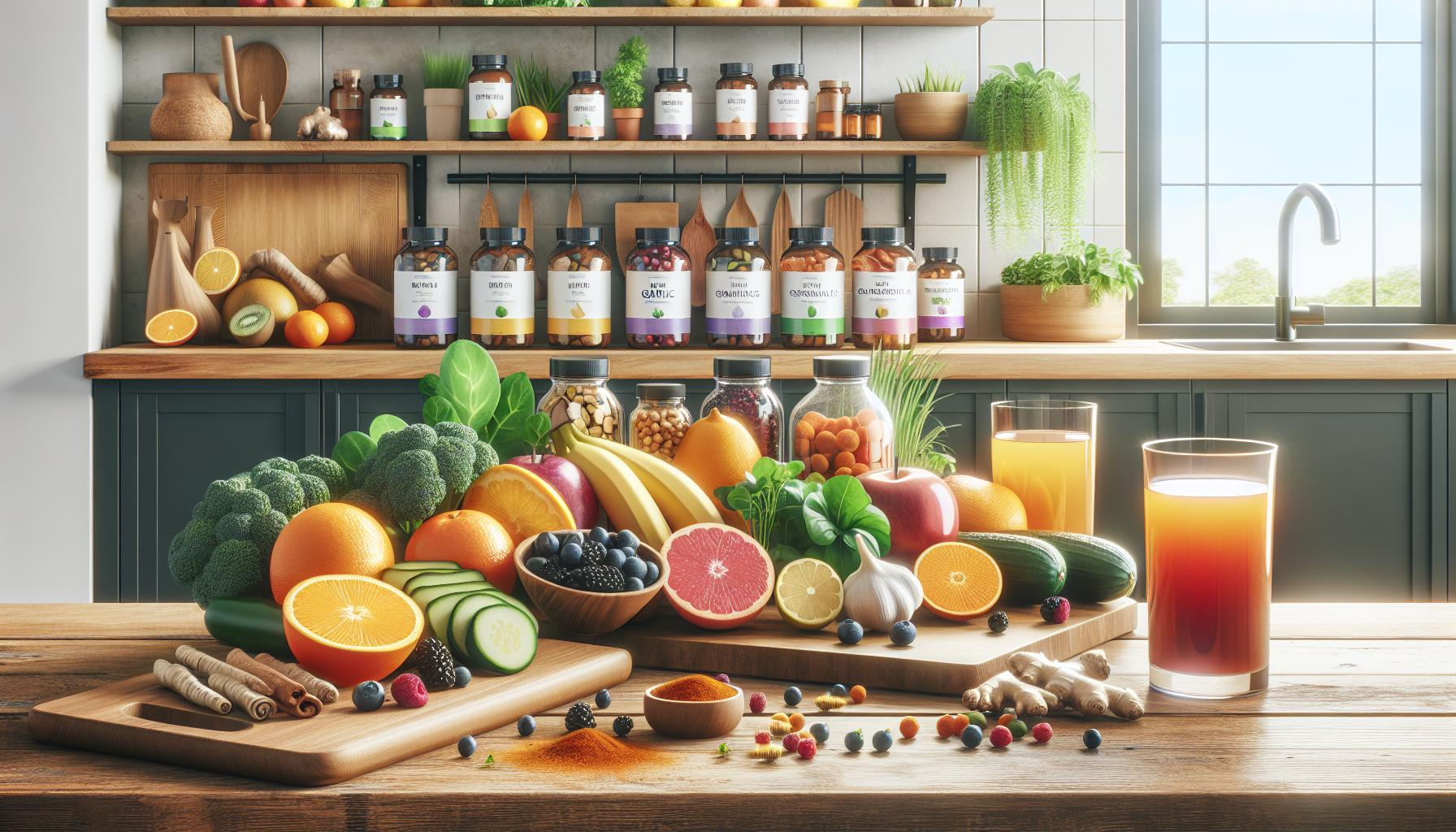Remember when everyone thought 2020 would be just another year? Well it turned out to be quite the rollercoaster ride for the food industry. From whipped coffee taking over social media to banana bread becoming the unofficial quarantine mascot this year transformed how people cook eat and think about food.
The pandemic pushed home cooking into overdrive with amateur chefs experimenting in their kitchens like never before. Instagram feeds filled with sourdough starters while TikTok spawned viral food trends faster than anyone could keep up with. What started as necessity-driven cooking quickly evolved into a global culinary movement that redefined comfort food and sustainability in surprising ways.
2020 Food Trends
Plant-based alternatives dominated the 2020 Food Trends as consumers embraced sustainable eating habits. The shift toward meat-free options accelerated during the pandemic, driven by health consciousness and environmental concerns.
Beyond Meat and Impossible Foods
Plant-based meat alternatives hit mainstream markets in 2020, with Beyond Meat and Impossible Foods leading the charge. These companies expanded their retail presence by 600% across major supermarket chains including Walmart, Target and Kroger. Restaurants incorporated these alternatives into their menus, with Burger King’s Impossible Whopper generating $32 million in Q1 sales. The products gained popularity for their meat-like texture, achieving a 92% similarity rating in blind taste tests. Major fast-food chains adopted these alternatives:
- McDonald’s launched McPlant burger tests in 8 locations
- Starbucks added Impossible Breakfast Sandwich to 15,000 stores
- KFC partnered with Beyond Meat for plant-based chicken nuggets
Vegan Dairy Alternatives
Plant-based dairy sales surged 27% in 2020, reaching $7 billion in revenue. Oat milk emerged as the fastest-growing alternative, experiencing a 170% increase in retail sales. Major dairy companies responded by launching their own plant-based products:
| Product Category | Growth Rate | Market Value |
|---|---|---|
| Oat Milk | 170% | $213M |
| Almond Milk | 20% | $1.6B |
| Plant Cheese | 42% | $270M |
The dairy alternatives expanded beyond traditional milk products into yogurt, ice cream and cheese categories. Companies introduced innovative ingredients including pea protein, cashew cultures and coconut cream to replicate dairy textures.
Health-Focused Eating

The pandemic heightened consumer awareness about health-conscious eating habits in 2020. This shift prompted increased attention to foods that support overall wellness through natural ingredients.
Immunity-Boosting Foods
Vitamin C rich foods experienced a 76% sales increase in 2020 as consumers prioritized immune system support. Citrus fruits, berries, leafy greens saw unprecedented demand across grocery stores nationwide. Supplements containing zinc, elderberry extracts garnered significant market growth, with sales jumping 255% during peak pandemic months. Foods high in beta carotene such as sweet potatoes, carrots, spinach emerged as pantry staples. Research from Nielsen data showed consumers specifically sought out:
- Turmeric-based products for anti-inflammatory properties
- Ginger root sales increased 87% year-over-year
- Garlic supplements experienced 150% growth
- Mushroom varieties like reishi shiitake gained popularity
Functional Foods and Adaptogens
Adaptogenic herbs gained mainstream recognition in 2020, with ashwagandha leading market growth at 3,995% compared to 2019. Major food brands incorporated functional ingredients into everyday products:
| Ingredient | Growth Rate |
|---|---|
| Ashwagandha | 3,995% |
| Reishi | 2,800% |
| Cordyceps | 1,200% |
| Lion’s Mane | 940% |
Functional beverages containing probiotics kombucha matcha grew 25% in retail sales. Products featuring adaptogenic mushrooms expanded beyond specialty stores into conventional supermarkets. Brands launched new offerings combining multiple functional ingredients such as ashwagandha with probiotics or mushroom blends with herbs.
The Rise of Home Cooking

The pandemic lockdowns transformed kitchens into creative culinary spaces as 54% of Americans reported cooking more frequently at home in 2020. This shift sparked new cooking trends across social media platforms, creating digital communities centered around food preparation.
Sourdough Bread Making
Social media feeds filled with images of homemade sourdough bread as searches for sourdough recipes increased by 384% on Google in April 2020. Home bakers embraced the art of cultivating wild yeast starters, leading to a 145% increase in flour sales. Instagram recorded over 4.5 million #sourdough posts featuring crusty loaves with intricate scoring patterns. King Arthur Flour reported a 600% surge in website traffic for sourdough-related content, while their Baker’s Hotline received 35,000 calls about sourdough troubleshooting between March and June 2020.
| Comfort Food Item | Sales Increase |
|---|---|
| Boxed Mac & Cheese | 41% |
| Frozen Pizza | 53% |
| Cookie Dough | 57% |
| Canned Soup | 37% |
Sustainable and Ethical Eating

Consumer awareness of environmental impact drove significant changes in food consumption patterns during 2020. Sustainability emerged as a core focus in both home cooking and commercial food production, transforming how people approached their daily meals.
Zero-Waste Cooking
Zero-waste cooking practices gained momentum as consumers sought to reduce food waste during pandemic-related shopping restrictions. Home cooks embraced creative uses for vegetable scraps, creating broths from onion skins carrot tops. Food preservation methods like pickling fermenting saw a 165% increase in social media mentions. Companies responded by launching apps that helped track expiration dates reduce waste, with Too Good To Go expanding to serve 3.5 million users. Composting activities rose 71% among urban households, while grocery stores implemented “ugly produce” programs selling imperfect fruits vegetables at discounted prices.
Local Food Movement
Local food sourcing experienced unprecedented growth in 2020, with farmers’ market sales increasing 137% nationwide. Community Supported Agriculture (CSA) memberships expanded 320% during peak pandemic months. Digital platforms connecting consumers directly to local farms grew by 430%, enabling contactless pickup delivery options. Small scale urban farming initiatives multiplied, with 52% more Americans starting home gardens. Regional food hubs adapted by creating online marketplaces, resulting in $1.4 billion in direct-to-consumer sales. Independent grocers reported a 65% increase in locally sourced produce sales, while restaurants pivoted to featuring ingredients from nearby farms.
Virtual Food Experiences
The pandemic transformed traditional dining experiences into digital formats as restaurants pivoted to survive lockdowns. Virtual platforms emerged as essential connections between food businesses and consumers, creating new ways to experience culinary entertainment and education.
Online Cooking Classes
Professional chefs transitioned their expertise to digital platforms in 2020, teaching 3.2 million viewers through live-streamed cooking sessions. Major culinary institutions, including Le Cordon Bleu, launched virtual programs reaching 127 countries. Platforms like MasterClass reported a 500% increase in food-related course enrollments, while Airbnb Experiences hosted 85,000 virtual cooking classes. Popular topics included bread baking, pasta making, wine pairing classes with 76% of participants continuing their virtual culinary education post-initial session.
Restaurant Meal Kits
Top restaurants launched DIY meal kits, generating $132 million in revenue during 2020. These kits included pre-portioned ingredients, step-by-step instructions, plating guides from professional chefs. Popular offerings ranged from Michelin-starred tasting menus to local signature dishes. Data shows 83% of restaurants implemented meal kit programs, with 47% maintaining them as permanent offerings. Sales peaked during major holidays, with Valentine’s Day kits selling 230,000 units nationwide. Consumer satisfaction rates reached 92%, particularly among urban professionals aged 25-45.
Global Flavor Influences
International cuisines gained unprecedented momentum in 2020 as homebound consumers explored diverse culinary traditions through cooking apps social media platforms. The combination of increased home cooking time paired with digital accessibility transformed how Americans experienced global flavors.
Korean Food Popularity
Korean cuisine emerged as a dominant food trend in 2020, with kimchi sales increasing 952% on grocery delivery platforms. Gochugaru (Korean red pepper flakes) purchases rose by 190% as home cooks experimented with traditional Korean recipes. The popularity of Korean fried chicken surged 318% in delivery orders compared to 2019, while searches for “banchan” (Korean side dishes) grew by 241% on recipe websites. Social media platforms recorded 4.8 billion views for Korean cooking videos, with popular dishes including tteokbokki (spicy rice cakes), bulgogi, bibimbap. Major retailers expanded their Korean food sections by an average of 43% to meet growing consumer demand.
Modern Mediterranean
Mediterranean flavors adapted to contemporary cooking trends in 2020, focusing on plant-forward dishes incorporating regional spices herbs. Tahini consumption increased 515% while za’atar spice blend sales grew 325%. Online searches for shakshuka recipes jumped 237% harissa paste orders rose 185%. Mediterranean meal delivery services expanded by 275% with a focus on vegetarian options incorporating chickpeas fava beans lentils. Grocery stores reported a 167% increase in sales of specialty ingredients like preserved lemons sumac pomegranate molasses. Digital cooking classes featuring Mediterranean cuisine attracted 2.3 million participants demonstrating techniques for flatbread making mezze preparation herb-infused oils.
Plant-based Food
The 2020 Food Trends marked a pivotal turning point in how people approached cooking eating and sustainability. What started as pandemic-driven necessity transformed into lasting behavioral changes that continue to influence the food industry today.
From the explosive growth of plant-based alternatives to the renaissance of home cooking these shifts reshaped consumer priorities. The surge in digital culinary experiences local food sourcing and global flavor exploration demonstrated the food industry’s remarkable adaptability.
The trends that emerged in 2020 weren’t just temporary solutions – they’ve become integral parts of our modern food culture setting new standards for how we’ll approach food in the years ahead.

